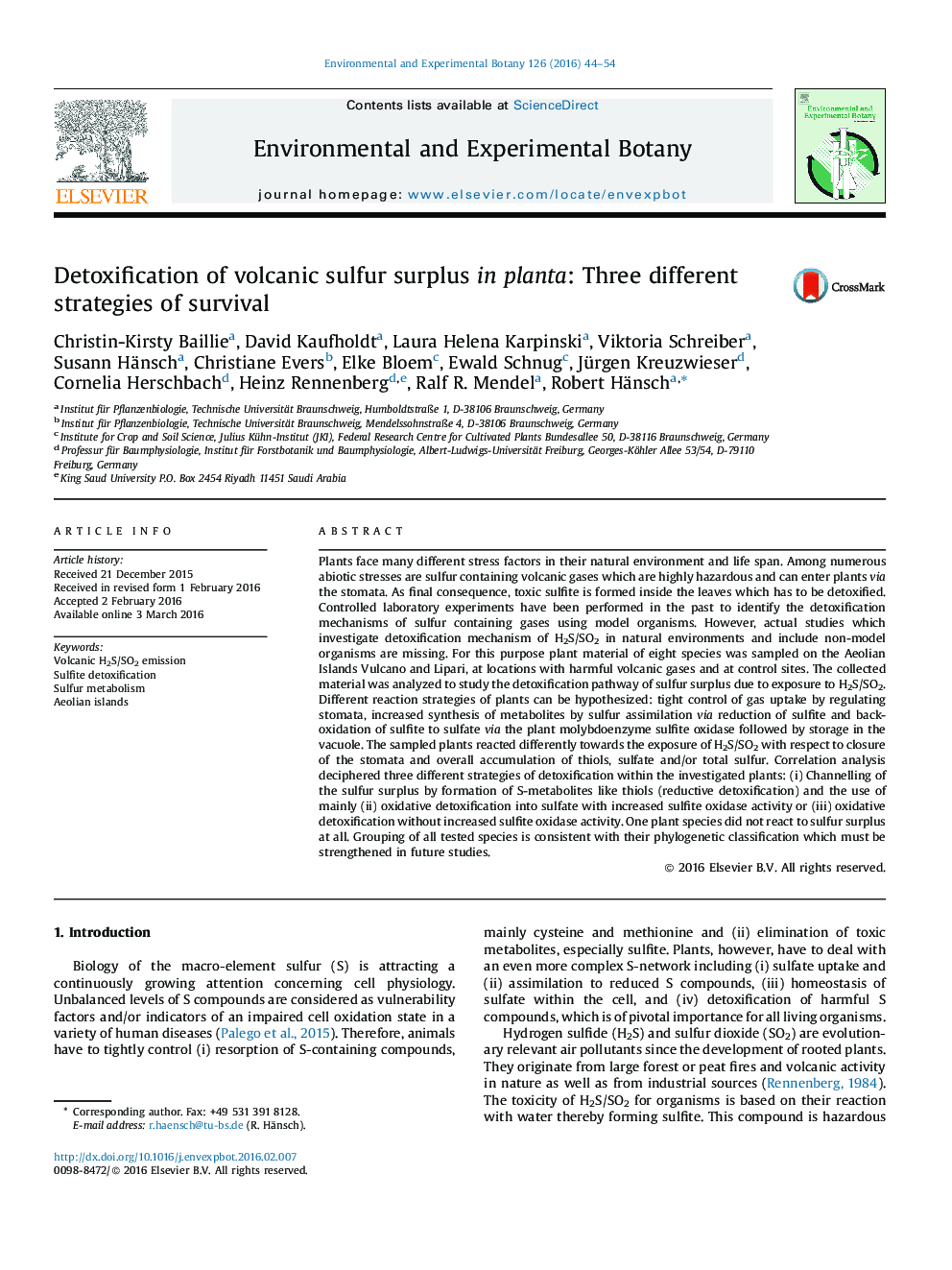| کد مقاله | کد نشریه | سال انتشار | مقاله انگلیسی | نسخه تمام متن |
|---|---|---|---|---|
| 4554149 | 1628051 | 2016 | 11 صفحه PDF | دانلود رایگان |
• Plant material sampled at locations with harmful volcanic gases and at control sites.
• Study of sulfur surplus detoxification with plant material from natural habitats.
• Oxidative detoxification pathway of H2S/SO2via increased sulfite oxidase activity.
• Cluster analysis reveals independent groups reacting towards high H2S/SO2 amounts.
• Grouping of all tested species is consistent with the phylogenetic classification.
Plants face many different stress factors in their natural environment and life span. Among numerous abiotic stresses are sulfur containing volcanic gases which are highly hazardous and can enter plants via the stomata. As final consequence, toxic sulfite is formed inside the leaves which has to be detoxified. Controlled laboratory experiments have been performed in the past to identify the detoxification mechanisms of sulfur containing gases using model organisms. However, actual studies which investigate detoxification mechanism of H2S/SO2 in natural environments and include non-model organisms are missing. For this purpose plant material of eight species was sampled on the Aeolian Islands Vulcano and Lipari, at locations with harmful volcanic gases and at control sites. The collected material was analyzed to study the detoxification pathway of sulfur surplus due to exposure to H2S/SO2. Different reaction strategies of plants can be hypothesized: tight control of gas uptake by regulating stomata, increased synthesis of metabolites by sulfur assimilation via reduction of sulfite and back-oxidation of sulfite to sulfate via the plant molybdoenzyme sulfite oxidase followed by storage in the vacuole. The sampled plants reacted differently towards the exposure of H2S/SO2 with respect to closure of the stomata and overall accumulation of thiols, sulfate and/or total sulfur. Correlation analysis deciphered three different strategies of detoxification within the investigated plants: (i) Channelling of the sulfur surplus by formation of S-metabolites like thiols (reductive detoxification) and the use of mainly (ii) oxidative detoxification into sulfate with increased sulfite oxidase activity or (iii) oxidative detoxification without increased sulfite oxidase activity. One plant species did not react to sulfur surplus at all. Grouping of all tested species is consistent with their phylogenetic classification which must be strengthened in future studies.
Figure optionsDownload as PowerPoint slide
Journal: Environmental and Experimental Botany - Volume 126, June 2016, Pages 44–54
